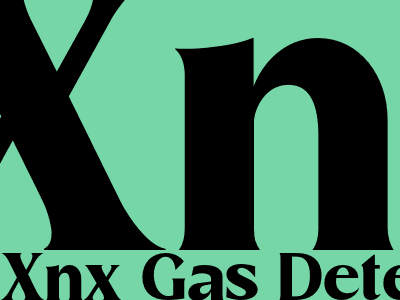
Xnx Gas Detector Calibration 2020
# Xnx Gas Detector Calibration 2020: A Comprehensive Guide ## Introduction Gas detectors are essential safety devices used to detect the presence of hazardous gases in various environments, including industrial facilities, commercial buildings, and residential homes. Regular calibration is crucial to ensure that these detectors are functioning accurately and reliably. This comprehensive guide provides a step-by-step overview of Xnx gas detector calibration in 2020, covering the latest advancements and best practices. ## Understanding Gas Detector Calibration Calibration involves adjusting a gas detector to a known concentration of gas, allowing it to accurately measure gas levels within its detection range. This ensures that the detector provides reliable readings and triggers alarms when gas concentrations exceed safe limits. ## Xnx Gas Detector Calibration Procedure Xnx gas detectors utilize advanced calibration techniques to ensure precise measurements. The calibration process generally follows these steps: - **Preparation:** Gather necessary equipment, including calibration gas, regulator, and flowmeter. Ensure the detector is in a clean and well-ventilated area. - **Gas Concentration Selection:** Choose a calibration gas concentration that is within the detector's detection range and representative of the expected gas levels in the target environment. - **Calibration Mode:** Activate the detector's calibration mode, which allows it to adjust its internal settings. - **Gas Introduction:** Connect the calibration gas to the detector's inlet port and adjust the flow rate to the specified value. - **Sensor Response Monitoring:** Observe the detector's display or output signal to ensure that it responds correctly to the calibration gas concentration. - **Adjustment:** If necessary, make fine adjustments to the detector's settings to match the known gas concentration. ## Best Practices for Xnx Gas Detector Calibration - **Frequency:** Calibrate Xnx gas detectors according to the manufacturer's recommendations or as required by applicable regulations. Regular calibration ensures optimal performance and reliability. - **Calibration Documentation:** Maintain detailed records of calibration procedures, including gas concentrations, dates, and any adjustments made. This documentation provides a history of the detector's performance and compliance. - **Environmental Considerations:** Perform calibration in a controlled environment with stable temperature, humidity, and airflow. Avoid exposure to extreme conditions that may affect the detector's accuracy. - **Qualified Personnel:** Ensure that calibration is conducted by trained and experienced personnel who understand the specific Xnx gas detector model and calibration procedures. ## Calibration Intervals for Xnx Gas Detectors The frequency of Xnx gas detector calibration depends on several factors, including: - **Detector Type:** Different detector types may require more frequent or less frequent calibration. - **Environment:** Harsh environments or areas with high gas concentrations may necessitate more frequent calibration. - **Regulations:** Industry regulations or standards may specify specific calibration intervals. Manufacturers typically provide recommended calibration intervals in the detector's user manual. Examples include: - **Monthly:** For detectors used in hazardous or critical applications. - **Quarterly:** For detectors used in less hazardous environments. - **Annually:** For detectors used in areas with low gas risk. ## Conclusion Xnx gas detector calibration is an essential aspect of ensuring the safety and accuracy of gas detection systems. By following the comprehensive guidance provided in this guide, users can effectively maintain Xnx gas detectors, ensuring reliable performance and compliance with industry standards. Regular calibration guarantees that these detectors continue to protect lives and property by detecting hazardous gases and triggering timely alarms.
Komentar